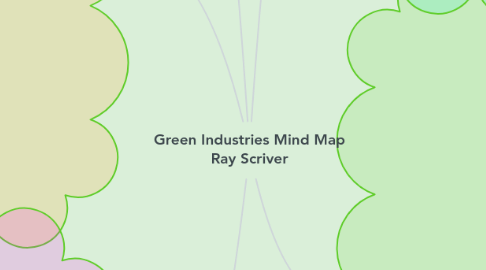
1. Floristry
1.1. Flower Cultivation & Growth
1.1.1. Greenhouse Management
1.1.2. Outdoor Cultivation
1.2. Floral Design & Arrangement
1.2.1. Events
1.2.2. Privately-owned Businesses
1.3. Marketing
1.4. Retail & Merchandising
1.5. Distribution
1.6. Health & Safety
1.6.1. Equipment Safety (Branch Cutters, Scissors, Hot-Glue, etc.)
1.6.2. Ergonomics & Best Practices for Loading/Unloading Shipments
1.6.3. Allergy & Poisonous Plant Awareness
2. Agriculture
2.1. Crop Farming
2.1.1. Food Prodution
2.2. Animal Agriculture
2.2.1. Livestock
2.2.2. Apiculturists
2.2.3. Vetrinary Sciences
2.3. Indigenous Agriculture
2.3.1. Culturally & Regionally Appropriate Agriculture
2.3.2. Traditional Food Systems
2.4. Sustainability & Climate Protection
2.4.1. Chemical & Pesticide Use
2.4.2. Environmental Sciences
2.4.3. Food Security
2.4.4. Organic Farming
2.5. Aquaculture
2.5.1. Aquatic Ecosystem Protection
2.6. Health & Safety
2.6.1. Equipment Safety & Maintenance
2.6.2. Safe Handling of Livestock, Insects, and Aquatic Animals
2.6.3. Safety Training on Exposure to Pesticides & Harsh Chemicals
3. Horticulture
3.1. Polmology
3.1.1. Fruit & Nut Crops
3.1.2. Planting, Harvesting, Storing, Processing
3.2. Olericulture
3.2.1. Vegetable Crops
3.2.2. Planting, Harvesting, Storing, Processing
3.3. Ornamental Horticulture
3.3.1. Floriculture
3.3.2. Landscape Horticulture
3.4. Production
3.4.1. Greenhouse Management
3.4.2. Nursery Management
3.4.3. Garden Centers & Retail Spaces
3.5. Environmental Protection & Sustainability
3.5.1. Soil Protection
3.5.2. Pest Control & Pesticide Use
3.5.3. Organic Horticulture
3.6. Botany
3.6.1. Plant & Horticultural Sciences
3.6.2. Horticulture Technology
3.7. Health & Safety
3.7.1. Best Practices for Self-Care (Weather Conditions, Hydration, Safe Lifting)
3.7.2. Safety Training on Exposure to Pesticides & Harsh Chemicals
3.7.3. Tool & Equipment Safety
4. Forestry
4.1. Forest Protection & Conservation
4.1.1. Climate Sustainability
4.1.2. Erosion Control
4.1.3. Rules & Regulations
4.2. Silviculture
4.2.1. Forest Management
4.2.2. Tree Cultivation
4.3. Ecosystem & Renewable Resource Sustainability
4.3.1. Biodiversity
4.3.2. Sustainable Harvesting
4.3.3. Environmental Supervisors
4.4. Social Forestry
4.4.1. Farm Forestry
4.4.2. Agroforestry
4.4.3. Community Forestry
4.5. Forestry Careers
4.5.1. Importer/Exporter
4.5.2. Forest Technician
4.5.3. Heavy Equipment Operators
4.6. Health & Safety
4.6.1. Natural Disaster Training (Forest Fire, Flash-Flood, Mudslide/Landslide)
4.6.2. Machinery & Equipment Training
4.6.3. Animal Encounter Training & Survival Techniques
5. Landscaping
5.1. Landscape Design
5.2. Hardscaping
5.2.1. Masonary
5.2.2. Woodworking
5.2.3. Non-living Elements
5.3. Softscaping
5.3.1. Living Elements
5.3.2. Gardening
5.3.3. Lawn Maintenance
5.4. Landscape Architecture
5.4.1. Engineering
5.4.2. Grading & Drainage
5.5. Environmental Science
5.5.1. Plant Suitability & Adaptability
5.5.2. Climate Control & Growing Conditions
5.6. Sustainability
5.6.1. Pesticide Use
5.6.2. Mulch/Soil Use
5.7. Arborist
5.8. Health & Safety
5.8.1. PPE (Gloves, Boots, Sunscreen)
5.8.2. Equipment Training & Safety (Chainsaws, Lawnmowers, Handsaws, etc.)
5.8.3. Safety Training on Exposure to Pesticides & Harsh Chemicals
